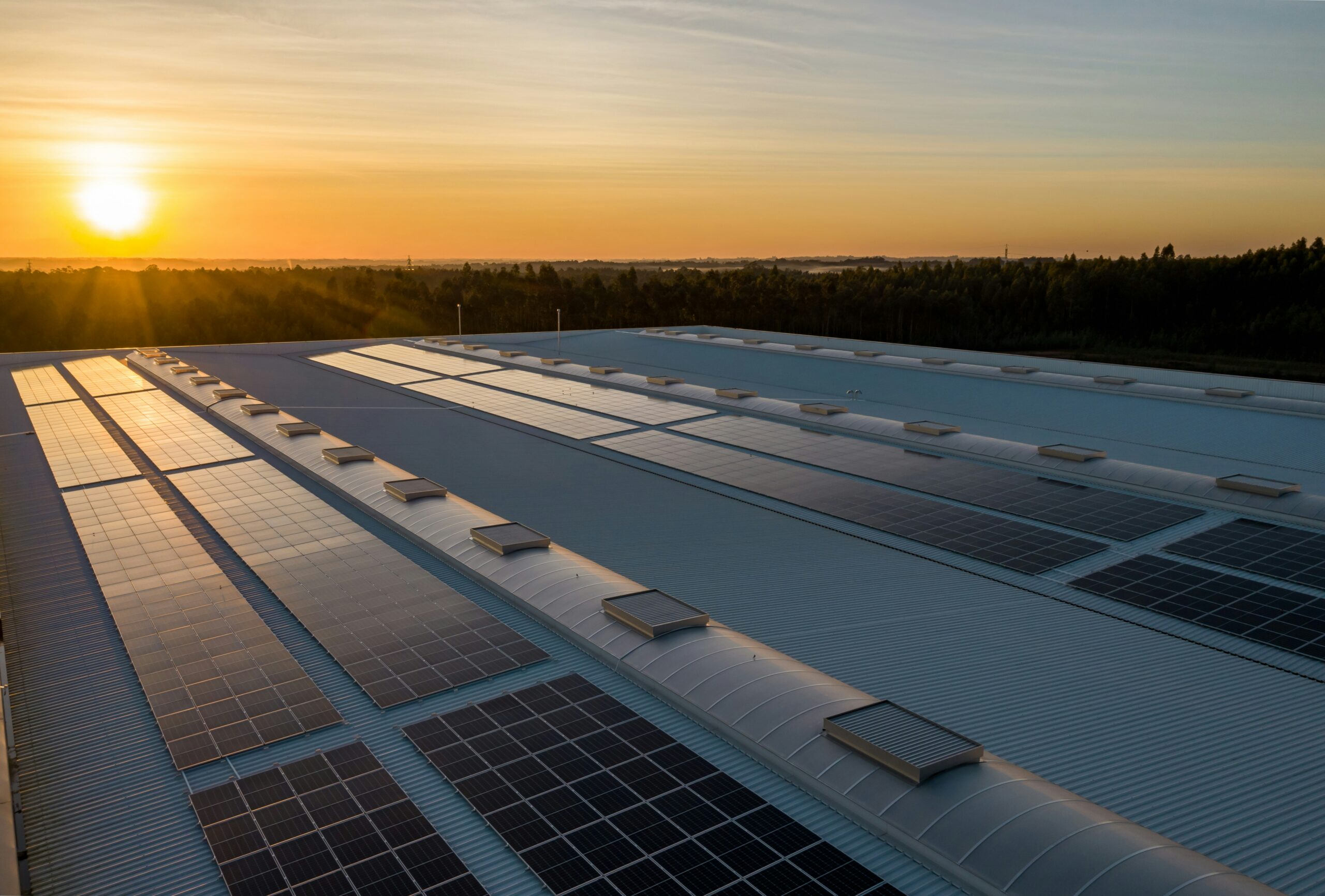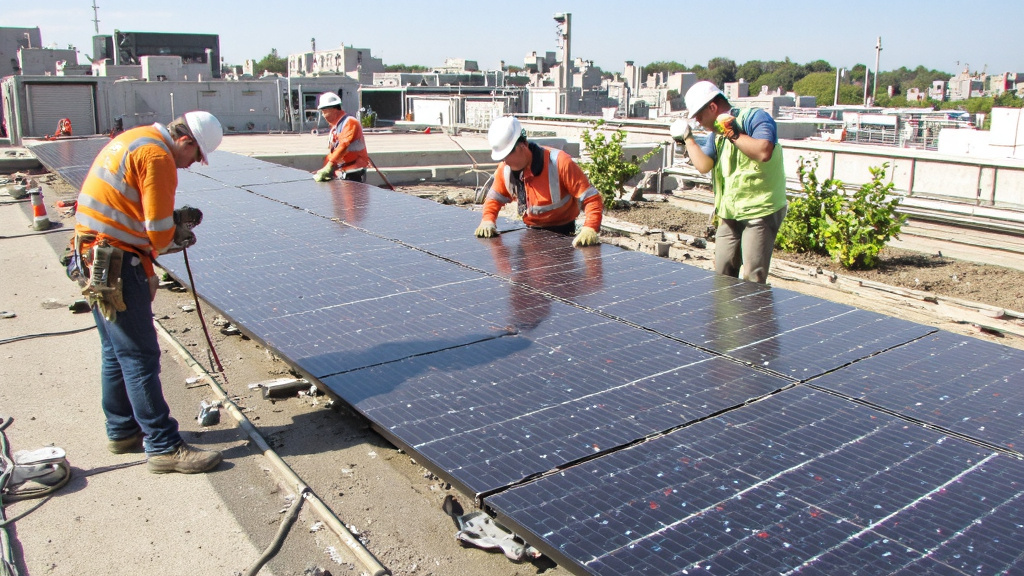5901 Botham Jean Blvd, Dallas, TX 75215
What Are Solar Energy Sustainability Initiatives?
June 12, 2025Solar energy sustainability initiatives are comprehensive programs that implement solar power generation while actively minimizing environmental impact and maximizing benefits to local communities. These approaches go beyond simply installing solar panels. They incorporate responsible planning, material selection, and ongoing management practices that protect ecosystems throughout a project’s lifecycle.
These initiatives focus on reducing greenhouse gas emissions by replacing fossil fuel power generation with clean solar energy. This transition helps communities make significant progress toward climate goals. Organizations like RENOVA have pioneered solar power plants that prioritize harmonious coexistence with nature and surrounding populations.
What distinguishes these sustainability initiatives is their dual commitment to environmental protection and community enrichment. They carefully assess potential ecological disruptions, select appropriate sites to minimize wildlife impact, and often incorporate features like wildlife-friendly fencing and native plant groundcover. Beyond environmental benefits, they create local jobs, support education, and can help reduce energy inequality in underserved regions.
How Do Solar Initiatives Contribute to Carbon Neutrality?

Solar PV power generation is pivotal in combating climate change. It produces zero CO2 emissions during electricity production. Unlike fossil fuel plants, solar installations operate without generating waste, wastewater, noise, or vibrations. This clean operation makes solar power essential for achieving carbon neutrality.
The environmental impact is significant. When organizations switch from conventional energy sources to solar power, they immediately reduce their carbon footprint. Each kilowatt-hour generated from solar panels instead of coal prevents approximately 0.85 kg of CO2 from entering the atmosphere. For natural gas replacement, the savings are about 0.35 kg of CO2 per kilowatt-hour.
Corporate commitments showcase the practical application of solar initiatives in carbon reduction strategies. RENOVA, for example, has implemented an ambitious roadmap to achieve carbon neutrality by 2050. Their large-scale solar projects are central to this long-term environmental strategy. Many other organizations follow similar paths, using solar power as a primary tool to meet their sustainability targets.
The scalability of solar technology enhances its benefits for carbon neutrality. From small rooftop installations to massive solar farms, these systems can be deployed in various environments. This flexibility allows implementation in urban centers, industrial zones, and remote locations. Each installation contributes incrementally toward carbon reduction goals.
Beyond direct emission reductions, solar initiatives create positive feedback loops in the energy system. As more solar capacity is added, the overall carbon intensity of the electrical grid decreases. This creates a multiplier effect where even non-solar electricity users benefit from a greener energy mix. The result is a gradual decarbonization of the entire power sector.
What Environmental Conservation Measures Are Implemented in Solar Projects?

The development of solar energy projects requires careful planning to minimize environmental impacts. Solar developers implement comprehensive conservation measures to protect and preserve local ecosystems. These practices help balance clean energy production with responsible environmental stewardship.
Minimizing land disturbance is a primary conservation strategy in solar projects. Developers conduct thorough environmental impact assessments before construction begins. This identifies sensitive habitats and species needing protection. Many projects utilize previously disturbed or degraded lands such as brownfields or former industrial sites to avoid disrupting pristine areas.
Protecting native vegetation forms another crucial component of solar conservation efforts. Some facilities maintain natural ground cover between panel rows rather than clearing all vegetation, reducing erosion and maintaining habitat for local wildlife. Projects may also transplant rare or protected plant species to safe locations before construction begins.
Wildlife-friendly fencing is an important conservation measure in solar installations. These specialized barriers allow smaller animals to move freely through the site while keeping larger animals away from sensitive equipment. Some designs feature elevated fence bottoms creating small gaps for animal passage. Others incorporate dedicated wildlife corridors preserving traditional migration routes.
Water conservation plays a vital role in sustainable solar development. Many facilities implement erosion control measures such as silt fences, sediment basins, and vegetated swales to prevent soil runoff and protect nearby waterways from contamination. Some developers also minimize water use during construction and maintenance operations.
Buffer zones around solar arrays provide additional environmental benefits. These areas, planted with native vegetation, create natural transitions between solar facilities and surrounding landscapes. Buffer zones support biodiversity by providing habitat for pollinators and other wildlife, help control erosion, and improve the visual integration of solar projects.
Some solar developers incorporate innovative vegetation management strategies. Instead of chemical herbicides, they may use sheep grazing to maintain vegetation heights around panels. This practice supports local agriculture while providing natural fertilization through sheep manure, eliminating the need for fossil-fueled mowing equipment.
Creating dedicated wildlife habitats within solar projects is increasingly common. Developers may establish pollinator gardens with native wildflowers to support bee and butterfly populations. Some facilities also construct artificial wetlands or preserve existing water bodies as habitat for amphibians and aquatic species.
Solar projects near protected areas often implement special measures to reduce their environmental footprint. Facilities adjacent to national parks or wilderness areas may use non-reflective panels to minimize visual impacts and adjust construction schedules to avoid disrupting seasonal wildlife activities such as nesting or migration.
The protection of bird populations receives particular attention in solar conservation planning. Some facilities install visual markers on fences and equipment to prevent bird collisions. Others maintain appropriate distances from known raptor nesting sites or important flyways, helping mitigate potential impacts on local and migratory bird species.
Soil health management represents another aspect of environmental conservation in solar projects. Developers implement practices that minimize soil compaction and maintain nutrient levels. Some facilities use low-impact mounting systems requiring minimal ground penetration, preserving soil structure and facilitating eventual site restoration.
Long-term habitat monitoring programs ensure the effectiveness of conservation measures over time. Many solar facilities conduct regular wildlife surveys and vegetation assessments throughout their operational life. These monitoring efforts allow for adaptive management approaches that can address changing environmental conditions or emerging conservation needs.
How Do Solar Initiatives Engage with Local Communities?

Solar energy initiatives actively engage with communities through various communication channels. These projects typically start with open dialogues between developers and local residents. Companies hold town halls, focus groups, and community forums to address concerns and gather input before construction begins.
The economic impact on local communities is significant. Many solar developers commission local construction firms, hire local workers, and partner with regional maintenance teams. This approach creates jobs and circulates revenue within the community. A National Renewable Energy Laboratory report suggests community engagement can increase project success rates by up to 30%.
Environmental education is another crucial component of community engagement strategies. Solar companies often develop educational programs for local schools, providing lessons on renewable energy and sustainability. These programs include hands-on demonstrations with solar equipment, helping students understand real-world applications of clean energy technology.
Many solar initiatives also organize study tours for community members. These tours allow residents to visit operational solar installations, see the technology firsthand, and learn about the benefits directly from project managers. This transparency helps build trust and address misconceptions about solar energy.
Community events provide another avenue for engagement. Solar developers regularly sponsor local festivals, sports competitions, and cultural celebrations. Their participation extends beyond financial support, with company representatives actively attending these events to build relationships with community members.
Solar initiatives increasingly implement creative approaches to community benefits. Some projects establish community benefit funds that support local infrastructure improvements or environmental conservation efforts. Others create scholarship programs for students pursuing careers in renewable energy or environmental sciences.
Collaborative decision-making processes are the most effective engagement strategy. When communities have a genuine voice in project planning, from site selection to design elements, they develop a sense of ownership in the initiative. This participatory approach transforms solar projects from external developments into community assets.
Conclusion: The Future of Solar Energy Sustainability Initiatives

Solar energy sustainability initiatives are crucial in shaping our environmental future. These efforts combine environmental protection, community empowerment, and clean energy transition into a unified approach to responsible power production. By focusing on carbon reduction goals and ecosystem preservation, these projects are setting new benchmarks for sustainability in global energy generation.
The impact of these initiatives extends beyond providing renewable power. They create jobs, strengthen community ties, and support global climate goals while building a more resilient energy infrastructure. As technology advances improve efficiency and reduce costs, solar energy will become increasingly central to sustainable development strategies worldwide. For responsible recycling solutions for your solar equipment at the end of its lifecycle, contact Okon Recycling at 214-717-4083.
